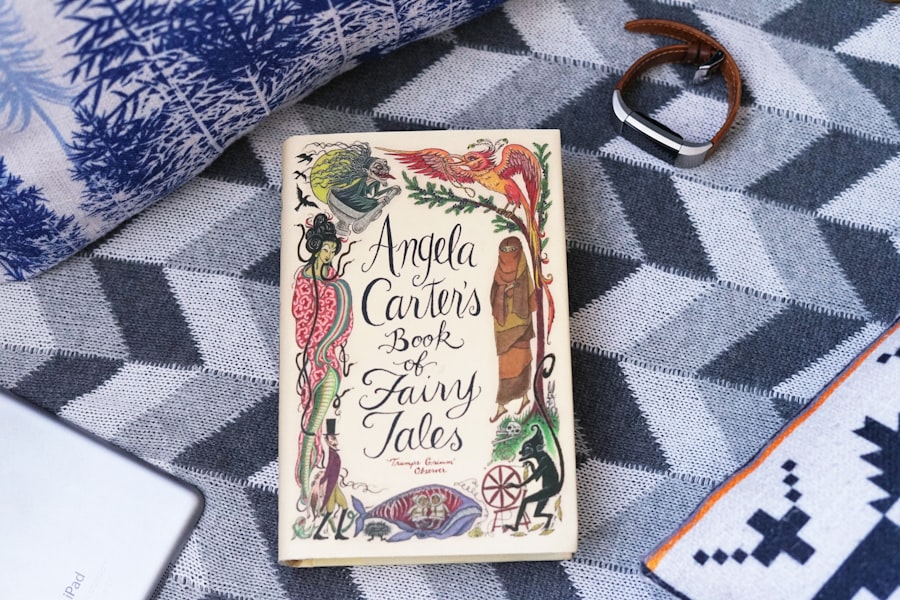Open relationships represent a departure from traditional monogamous frameworks, allowing individuals to engage in romantic or sexual relationships with multiple partners simultaneously. This arrangement can take various forms, from swinging—where couples engage in sexual activities with others together—to polyamory, which involves forming emotional connections with multiple partners. The essence of open relationships lies in the freedom to explore connections outside of a primary partnership, fostering an environment where love and intimacy can flourish in diverse ways.
The motivations for entering an open relationship are as varied as the individuals involved. Some may seek to enhance their sexual experiences, while others might desire emotional connections that their primary partner cannot fulfill. For instance, a couple may find that they have differing sexual appetites or interests, prompting them to explore outside their relationship to satisfy those needs.
Additionally, some individuals are drawn to the idea of community and shared experiences, finding joy in the connections that can arise from multiple partnerships. Understanding these motivations is crucial for anyone considering or currently navigating an open relationship, as it sets the stage for the dynamics that will unfold.
Key Takeaways
- Open relationships involve consensual non-monogamy and can take many different forms
- Effective communication is essential in non-monogamous dynamics to ensure all parties feel heard and understood
- Jealousy and insecurity are common in open relationships and require open and honest communication to address
- Setting clear boundaries and obtaining consent from all parties involved is crucial in non-monogamous relationships
- Navigating different relationship dynamics requires flexibility, understanding, and empathy from all parties involved
Communication in Non-Monogamous Dynamics
Effective communication is the cornerstone of any successful relationship, but it takes on heightened importance in non-monogamous dynamics. In open relationships, partners must engage in ongoing dialogues about their feelings, desires, and boundaries. This requires a level of honesty and vulnerability that can be challenging but is essential for maintaining trust and understanding.
Regular check-ins can help partners assess their comfort levels and address any emerging concerns before they escalate into larger issues. For example, a couple might establish a routine where they discuss their experiences with other partners weekly. During these conversations, they can share what they enjoyed, any feelings of jealousy that arose, and how they can support each other moving forward.
This practice not only fosters transparency but also reinforces the emotional bond between partners. Moreover, it allows individuals to articulate their needs and desires clearly, ensuring that both partners feel heard and valued in the relationship. By prioritizing communication, couples can navigate the complexities of non-monogamy with greater ease and confidence.
Jealousy and Insecurity in Open Relationships

Jealousy and insecurity are common emotions that can surface in open relationships, often stemming from fears of inadequacy or abandonment. When one partner engages with others, it can trigger feelings of comparison or concern about losing the primary relationship. For instance, if one partner develops a close emotional bond with another person, the other partner may feel threatened or question their own worth within the relationship.
Recognizing these feelings as natural responses is crucial for managing them effectively. Addressing jealousy requires open dialogue and self-reflection. Partners should feel empowered to express their insecurities without fear of judgment.
For example, if one partner feels uncomfortable with the amount of time the other spends with a new partner, they should communicate this concern openly. This conversation can lead to discussions about time management, emotional needs, and reassurance strategies that can help alleviate feelings of jealousy. Additionally, practicing self-compassion and understanding that these feelings are part of the human experience can help individuals navigate their emotions more effectively.
Boundaries and Consent in Non-Monogamy
Establishing clear boundaries and obtaining consent are fundamental aspects of non-monogamous relationships. Boundaries serve as guidelines that help partners navigate their interactions with others while respecting each other’s comfort levels. These boundaries can encompass various aspects of the relationship, including sexual practices, emotional involvement, and time commitments.
For instance, a couple may agree that they are comfortable with sexual encounters but prefer to keep emotional connections exclusive to their primary partnership. Consent is equally vital in non-monogamous dynamics. It is essential that all parties involved are fully informed and agree to the terms of the relationship.
This means discussing not only what is acceptable but also what is off-limits. For example, if one partner feels uncomfortable with their significant other spending the night with another partner, this should be addressed before any such situation arises. By prioritizing consent and boundaries, partners can create a safe space where everyone feels respected and valued.
Navigating Different Relationship Dynamics
Non-monogamous relationships can take many forms, each with its own unique dynamics and challenges. Some individuals may find themselves in hierarchical structures where one partner holds primary status over others, while others may prefer a more egalitarian approach where all partners are considered equal. Understanding these different dynamics is crucial for individuals exploring non-monogamy, as it influences how relationships are structured and experienced.
For instance, in a polyamorous relationship with a hierarchical structure, one partner may have more decision-making power or emotional priority over others. This arrangement can work well for some couples but may lead to feelings of resentment or inadequacy among secondary partners if not managed carefully. Conversely, egalitarian structures promote equal standing among all partners but may require more effort in terms of communication and coordination to ensure everyone’s needs are met.
By recognizing the various dynamics at play in non-monogamous relationships, individuals can make informed choices about what structure aligns best with their values and desires.
Resources for Non-Monogamous Relationships

Navigating non-monogamous relationships can be complex, but numerous resources are available to support individuals on this journey. Books such as “The Ethical Slut” by Dossie Easton and Janet W. Hardy provide foundational knowledge about non-monogamy while offering practical advice on communication and boundary-setting.
Online forums and communities also serve as valuable spaces for individuals to share experiences, seek advice, and connect with others who share similar relationship styles. Workshops and counseling services tailored to non-monogamous dynamics can further enhance understanding and skills related to open relationships. Many therapists specialize in non-traditional relationship structures and can provide guidance on navigating challenges such as jealousy or communication breakdowns.
By leveraging these resources, individuals can cultivate healthier relationships while gaining confidence in their non-monogamous choices.
Challenges and Benefits of Open Relationships
Open relationships come with their own set of challenges and benefits that individuals must consider when exploring this dynamic. One significant challenge is managing time effectively among multiple partners while ensuring that each relationship receives adequate attention. Balancing commitments can become overwhelming if not approached thoughtfully, leading to feelings of neglect or burnout.
On the flip side, open relationships offer numerous benefits that can enhance personal growth and relational satisfaction. The opportunity to explore diverse connections allows individuals to learn more about themselves and their desires while fostering a sense of community among partners. Engaging with multiple people can also lead to increased emotional resilience as individuals navigate various dynamics and learn to communicate effectively across different contexts.
Ultimately, understanding both the challenges and benefits of open relationships equips individuals with the knowledge needed to make informed decisions about their relational structures.
Exploring Non-Monogamous Relationship Structures
The landscape of non-monogamous relationships is rich and varied, encompassing a wide range of structures that cater to different preferences and lifestyles.
Others might explore polyamory, which emphasizes forming deep emotional connections with multiple partners simultaneously.
Another structure gaining popularity is relationship anarchy, which rejects traditional hierarchies altogether in favor of fluid connections based on individual needs and desires. In this model, each relationship is treated uniquely without predefined roles or expectations based on societal norms. Additionally, solo polyamory allows individuals to maintain multiple relationships without seeking a primary partner or traditional commitment.
As society continues to evolve in its understanding of love and connection, these diverse structures offer alternatives for those seeking fulfillment outside conventional monogamy. By exploring various non-monogamous relationship structures, individuals can find arrangements that resonate with their values and desires while fostering meaningful connections with others.
If you’re interested in exploring more about open relationships and non-monogamous dynamics, you may want to check out the article “Hello World” on Relationship Advice. This article delves into the basics of open relationships and provides valuable insights on how to navigate the complexities of non-monogamous dynamics. It offers practical tips and advice for individuals looking to explore alternative relationship structures. You can read the full article here.
FAQs
What are open relationships?
Open relationships are relationships in which both partners agree that they are allowed to have romantic or sexual relationships with other people outside of their primary relationship. This can take many forms, including polyamory, swinging, and other non-monogamous dynamics.
What are some common challenges in open relationships?
Some common challenges in open relationships include jealousy, communication issues, boundary setting, and managing time and emotional energy between multiple partners. It’s important for all parties involved to have open and honest communication to navigate these challenges.
What are some popular books about open relationships?
Some popular books about open relationships include “The Ethical Slut” by Dossie Easton and Janet W. Hardy, “Opening Up” by Tristan Taormino, “More Than Two” by Franklin Veaux and Eve Rickert, and “Designer Relationships” by Mark A. Michaels and Patricia Johnson.
How can books about open relationships help navigate non-monogamous dynamics?
Books about open relationships can provide valuable insights, advice, and tools for navigating non-monogamous dynamics. They can offer guidance on communication, boundary setting, managing jealousy, and building healthy and fulfilling relationships with multiple partners.
Are open relationships suitable for everyone?
Open relationships are not suitable for everyone, and it’s important for individuals to carefully consider their own needs, boundaries, and desires before entering into non-monogamous dynamics. It’s also important for all parties involved to give enthusiastic and informed consent.
